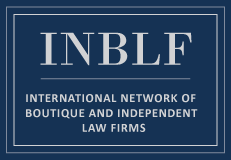By Lawrence Gennari
This has been an historic year for M&A and has many companies and management teams wondering whether an exit next year might be in the offing. As strategic planning for 2017 continues, decision makers planning for an exit should avoid five common mistakes in the process.
- Forgetting to do due diligence on your own business. How will your business look to a potential buyer? Every sale or financing starts with due diligence and that means corporate books and records and significant contracts should be in good order. Now is the time to complete stock option or restricted stock grants, estate planning transfers or issuances long promised but not papered. In connection with new grants or stock awards, the Company may want to consider securing or updating a so-called 409A valuation of the business, to establish “fair market value” for tax purposes. Also, consider necessary changes to important contracts, leases or customer agreements. Better to negotiate those now, instead of during the compressed time frame of a contemplated sale.
- No Competitive Process. Separate from a tax oriented 409A valuation to set option prices, should the Company pay for an outside enterprise valuation now to get a sense of what’s “market”? Not necessarily. An overall “enterprise” valuation won’t necessarily tell the business owners what a company is worth. For that, you’d need a competitive process, most likely run by an experienced and practical investment banker with experience in your market segment. Many companies make the mistake of talking to only one potential partner or in reacting to an unsolicited term sheet from an interested party. Due diligence commences, negotiations quickly follow, and the team finds itself confronting the often difficult choice of status quo versus sale to one particular buyer. Remember: terms, conditions and equity valuations improve only in the context of a competitive process, with multiple suitors with terms sheets bidding against each other. The executive team should consider how to create such a process or meet with investment bankers who know how to make that happen.
- No Plan B. Resist the temptation to put off a needed management shakeup or customer contract price negotiations just to maintain the status quo. Projections for 2017 should include a go-it alone strategy, with realistic plans for personnel, marketing and cash flow, including any necessary equity or debt infusions to increase top line revenues for the longer term. Hope for a game-changing transaction is not a substitute for a real time operational and financing strategy. Chances are, finding and negotiating the right transaction will take months, especially if a competitive process is in play. Any team would want the leverage of continuing the business in the ordinary course while the auction/sale process is ongoing.
- Avoiding the hard questions in the letter of intent. The letter of intent will set out expectations for both sides as well as the parameters for continuing negotiation. In many cases, the sellers should spend a lot more time on two basic questions: (i) what is the purchase price and (ii) under what circumstances will I have to give some it back. Is the purchase price at closing satisfactory or is much of it dependent on earnout payments, which provide for contingent purchase price payments over time, the details of which still require negotiation? What are the indemnity obligations for any breach or inaccuracy of the sellers’ representations and warranties and are they capped, limited or do they survive the closing for a very long time? What are the terms of any continuing employment, including non-competes and severance? Sellers will save a lot of time and money if they invest the time hammering out these issues for the letter of intent instead of waiting until the deal is at the documentation stage.
- Structure matters. The Company should be engaging its accountants and lawyers about tax and structure planning now. What are the tax implications of the proposed deal structure? Next year’s tax code proposals could bring big changes and thoughtful structural changes now could yield significant efficiencies next year. Also, if the team is not familiar with “installment sale” structures, which provide for deferred tax treatment of sale proceeds, they should consult their legal and tax advisors and get up to speed.
Financial pundits are suggesting an uptick in corporate finance activity in 2017. A proactive exit planning strategy—and avoiding typical mistakes—will best position your company for what lies ahead.
Gennari is a partner at Gennari Aronson LLP and an Adjunct Professor at Boston College Law School where he has taught Mergers and Acquisitions, Corporate Finance and now a separate seminar “Advising the Entrepreneur.” He can be reached at lgennari@galawpartners.com.




